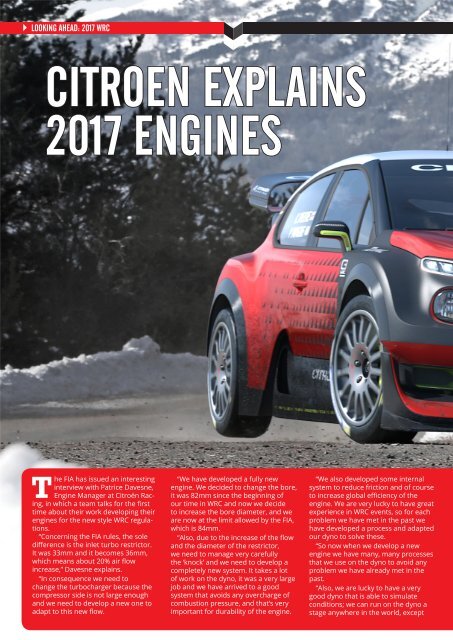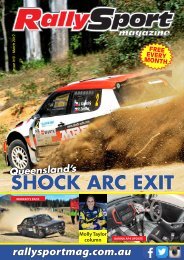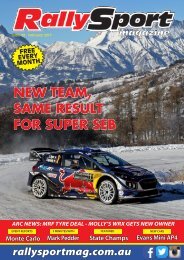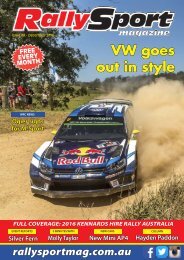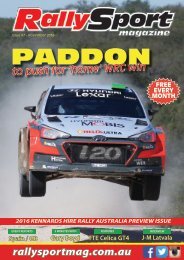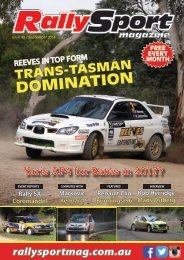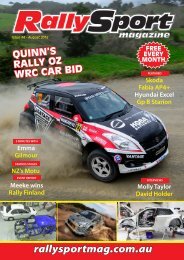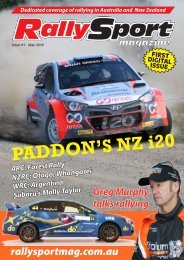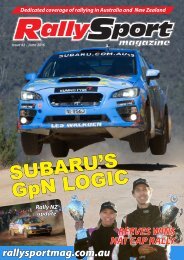RallySport Magazine October 2016
The October 2016 issue of RallySport Magazine, featuring the latest rally news, features and interviews from Australia, New Zealand and the World Rally Championship.
The October 2016 issue of RallySport Magazine, featuring the latest rally news, features and interviews from Australia, New Zealand and the World Rally Championship.
You also want an ePaper? Increase the reach of your titles
YUMPU automatically turns print PDFs into web optimized ePapers that Google loves.
LOOKING AHEAD: 2017 WRC<br />
CITROEN EXPLAINS<br />
2017 ENGINES<br />
The FIA has issued an interesting<br />
interview with Patrice Davesne,<br />
Engine Manager at Citroën Racing,<br />
in which a team talks for the first<br />
time about their work developing their<br />
engines for the new style WRC regulations.<br />
“Concerning the FIA rules, the sole<br />
difference is the inlet turbo restrictor.<br />
It was 33mm and it becomes 36mm,<br />
which means about 20% air flow<br />
increase,” Davesne explains.<br />
“In consequence we need to<br />
change the turbocharger because the<br />
compressor side is not large enough<br />
and we need to develop a new one to<br />
adapt to this new flow.<br />
44 | RALLYSPORT MAGAZINE - OCTOBER <strong>2016</strong><br />
“We have developed a fully new<br />
engine. We decided to change the bore,<br />
it was 82mm since the beginning of<br />
our time in WRC and now we decide<br />
to increase the bore diameter, and we<br />
are now at the limit allowed by the FIA,<br />
which is 84mm.<br />
“Also, due to the increase of the flow<br />
and the diameter of the restrictor,<br />
we need to manage very carefully<br />
the ‘knock’ and we need to develop a<br />
completely new system. It takes a lot<br />
of work on the dyno, it was a very large<br />
job and we have arrived to a good<br />
system that avoids any overcharge of<br />
combustion pressure, and that’s very<br />
important for durability of the engine.<br />
“We also developed some internal<br />
system to reduce friction and of course<br />
to increase global efficiency of the<br />
engine. We are very lucky to have great<br />
experience in WRC events, so for each<br />
problem we have met in the past we<br />
have developed a process and adapted<br />
our dyno to solve these.<br />
“So now when we develop a new<br />
engine we have many, many processes<br />
that we use on the dyno to avoid any<br />
problem we have already met in the<br />
past.<br />
“Also, we are lucky to have a very<br />
good dyno that is able to simulate<br />
conditions; we can run on the dyno a<br />
stage anywhere in the world, except


